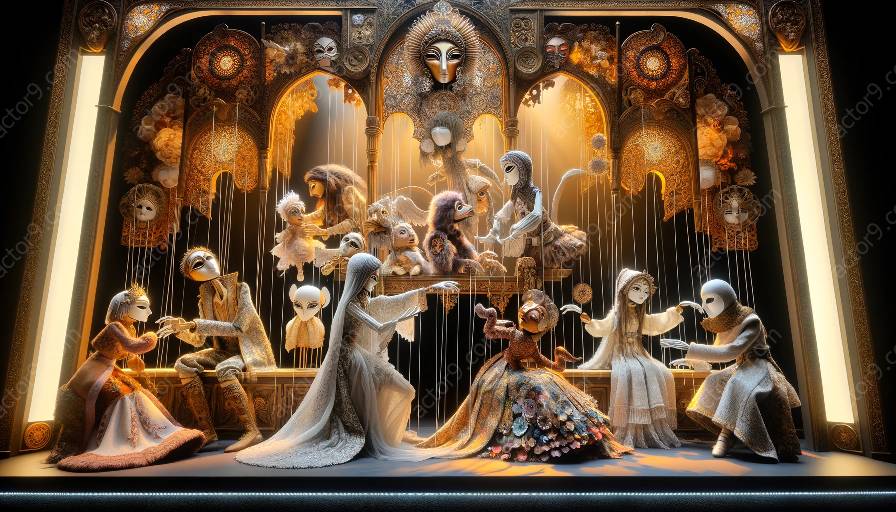Improvisation, physical theater, puppetry, and mask work are all rich and complex art forms, each offering unique creative potential with their own set of challenges and rewards. When these elements are combined, they can create a dynamic and compelling performance experience that engages the audience on multiple levels. In this topic cluster, we will explore how improvisation enhances physical theater in the context of puppetry and mask work by delving into the interplay between improvisation and these art forms.
Understanding Improvisation in Puppetry and Mask Work
Improvisation in puppetry and mask work involves spontaneous and unscripted performance that requires performers to think on their feet and respond to the unpredictable nature of these art forms. Puppetry often involves the manipulation of puppets to convey emotions, tell stories, and explore themes, while mask work focuses on the use of masks as a theatrical tool to express characters and emotions in a non-verbal manner. Both puppetry and mask work provide a unique set of challenges for improvisation, as performers must embody characters and convey emotions through physical movements and expressions.
The Role of Improvisation in Physical Theater
Physical theater is a form of performance that emphasizes the use of the body and physicality to convey narratives and emotions. Improvisation plays a significant role in physical theater, as performers need to react to their surroundings, adapt to unexpected situations, and express themselves through movement and gestures. The incorporation of improvisation in physical theater allows performers to tap into their creativity and explore the boundaries of their physical expression, leading to organic and authentic performances that engage audiences in a visceral and immediate way.
Exploring the Interplay between Improvisation and Puppetry/Mask Work in Physical Theater
When improvisation is integrated into the context of puppetry and mask work within physical theater, it creates a captivating synergy that amplifies the impact of the performance. By allowing performers to respond spontaneously to the movements and expressions of puppets and masks, improvisation adds an extra layer of depth and nuance to the storytelling process. This interplay between improvisation and these art forms creates an environment where creativity and imagination can flourish, resulting in performances that are visually stunning, emotionally resonant, and intellectually stimulating.
Benefits of Embracing Improvisation in Puppetry, Mask Work, and Physical Theater
Embracing improvisation in the context of puppetry, mask work, and physical theater offers a myriad of benefits for performers and audiences alike. For performers, improvisation fosters spontaneity, adaptability, and presence, enabling them to connect with their characters and the audience in a more profound and immediate manner. It also allows for the exploration of new artistic possibilities and encourages a sense of playfulness and creativity in the performance process. From the audience's perspective, the integration of improvisation creates a sense of authenticity and unpredictability, making each performance a unique and immersive experience that resonates on a deeply human level.
Conclusion
Improvisation is a powerful and transformative tool when integrated into the context of puppetry, mask work, and physical theater. Its ability to enhance storytelling, deepen emotional connections, and foster creative exploration makes it an invaluable component of these art forms. By understanding the interplay between improvisation and these disciplines, performers and audiences can embark on a journey of discovery that leads to meaningful and impactful theatrical experiences.




























